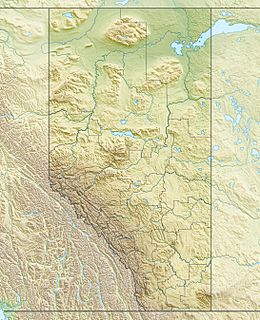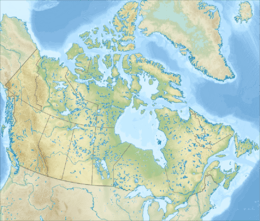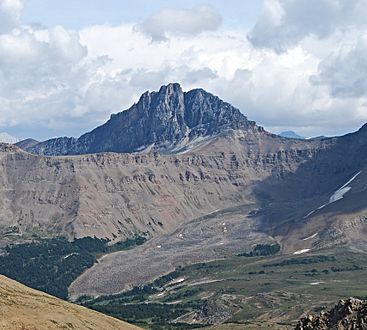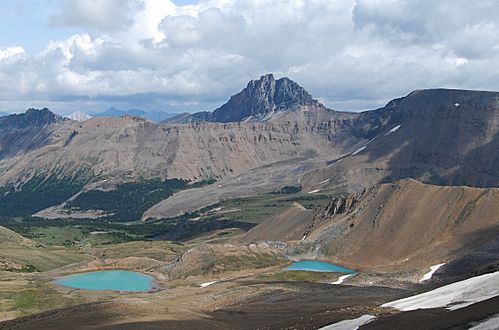The Watchtower (Alberta) facts for kids
Quick facts for kids The Watchtower |
|
|---|---|

The Watchtower
|
|
| Highest point | |
| Elevation | 2,791 m (9,157 ft) |
| Prominence | 651 m (2,136 ft) |
| Parent peak | Mount Kerkeslin (2950 m) |
| Listing | Mountains of Alberta |
| Geography | |
| Location | Alberta, Canada |
| Parent range | Maligne Range Canadian Rockies |
| Topo map | NTS 83C/13 |
| Geology | |
| Age of rock | Cambrian |
| Type of rock | Sedimentary rock |
| Climbing | |
| First ascent | 1951 R.K. Irvin, J. Mowat, R. Strong |
| Easiest route | Climbing |
The Watchtower is a tall mountain peak in Jasper National Park, Alberta, Canada. It stands about 2,791 meters (9,157 feet) high. You can find it in the beautiful Maligne River valley, part of the Canadian Rockies. This mountain is easy to spot from the Maligne Lake Road, looking over Medicine Lake. It's a famous landmark in the area.
Contents
Mountain History: How The Watchtower Got Its Name
The Watchtower mountain was named in 1916 by a person named Morrison P. Bridgland. He was a surveyor, which means he measured and mapped land. Bridgland named many mountains in Jasper National Park and the Canadian Rockies.
The name "The Watchtower" was officially accepted in 1947. This happened when the Geographical Names Board of Canada approved it.
First Climbers to Reach The Watchtower's Top
The very first time people climbed to the top of The Watchtower was in 1951. The climbers were R.K. Irvin, J. Mowat, and R. Strong. They were the first to successfully reach its summit.
Understanding The Watchtower's Geology
The Watchtower mountain is made of a type of rock called sedimentary rock. This kind of rock forms over a very long time from layers of sand, mud, and tiny bits of plants and animals. These layers get pressed together and harden.
The rocks that make up The Watchtower were formed during a time called the Cambrian period. This was a very, very long time ago in Earth's history. Later, during an event called the Laramide orogeny, these rocks were pushed up and over younger rocks. This is how the mountain got its shape.
The Watchtower's Climate and Weather
The Watchtower is located in a subarctic climate zone. This means the area has long, cold, and snowy winters. The summers are usually mild, not too hot.
During winter, temperatures can drop very low, sometimes below -20 °C (-4 °F). With the wind, it can feel even colder, below -30 °C (-22 °F).
Water Flow from The Watchtower
The snow and rain that fall on The Watchtower eventually melt and flow down the mountain. This water creates small streams like Excelsior Creek and Watchtower Creek. These creeks then join the Maligne River. The Maligne River eventually flows into the larger Athabasca River.
Images for kids





